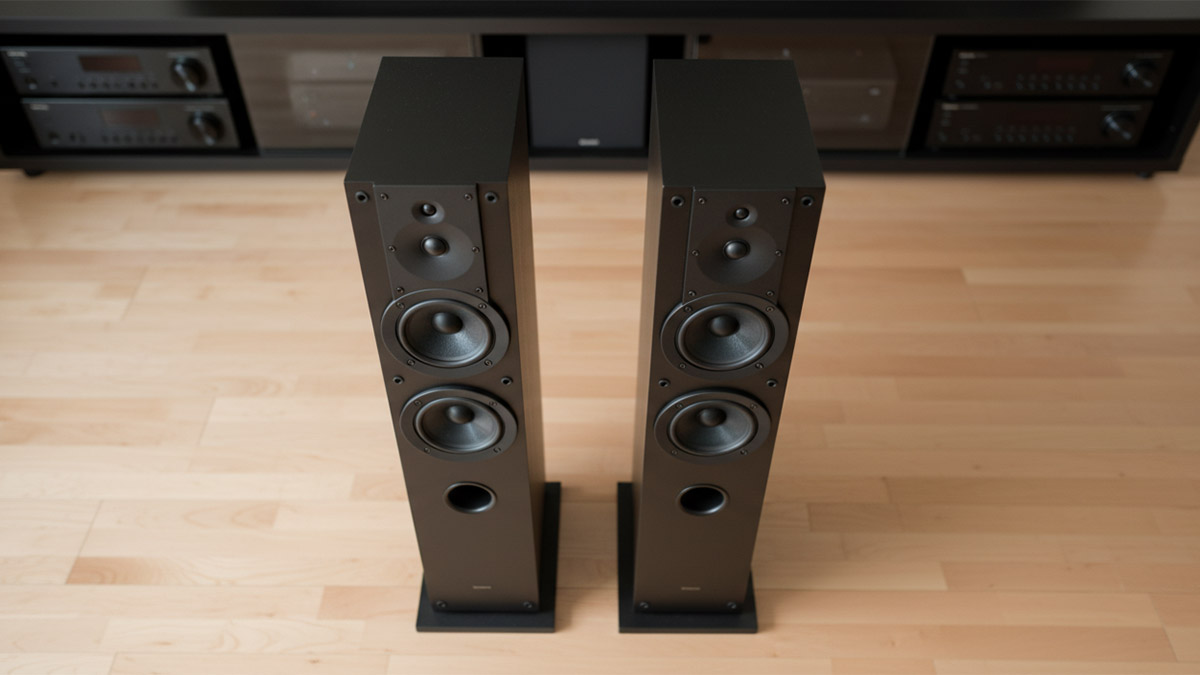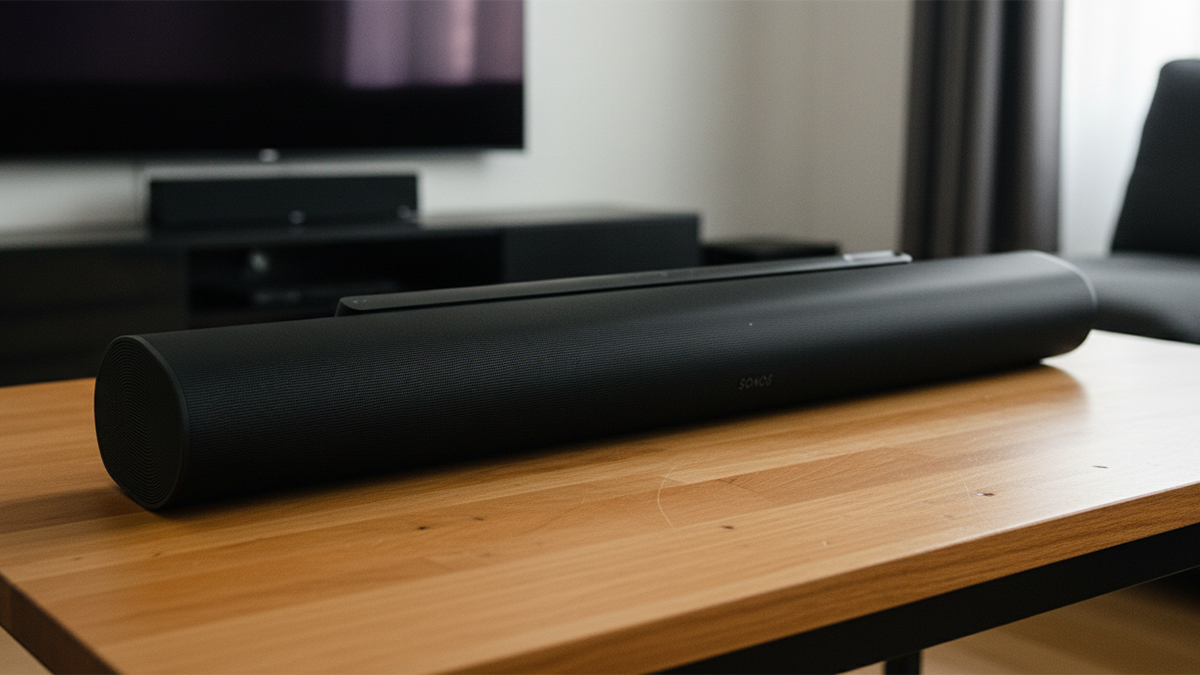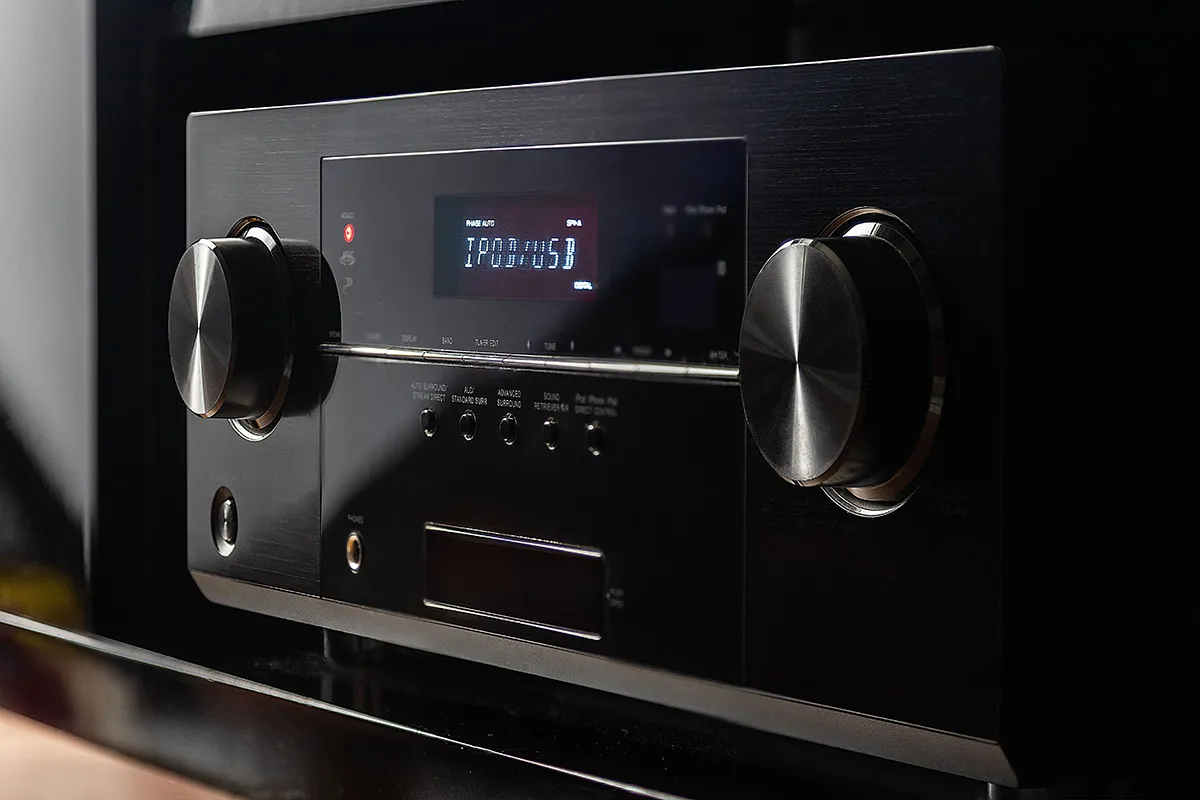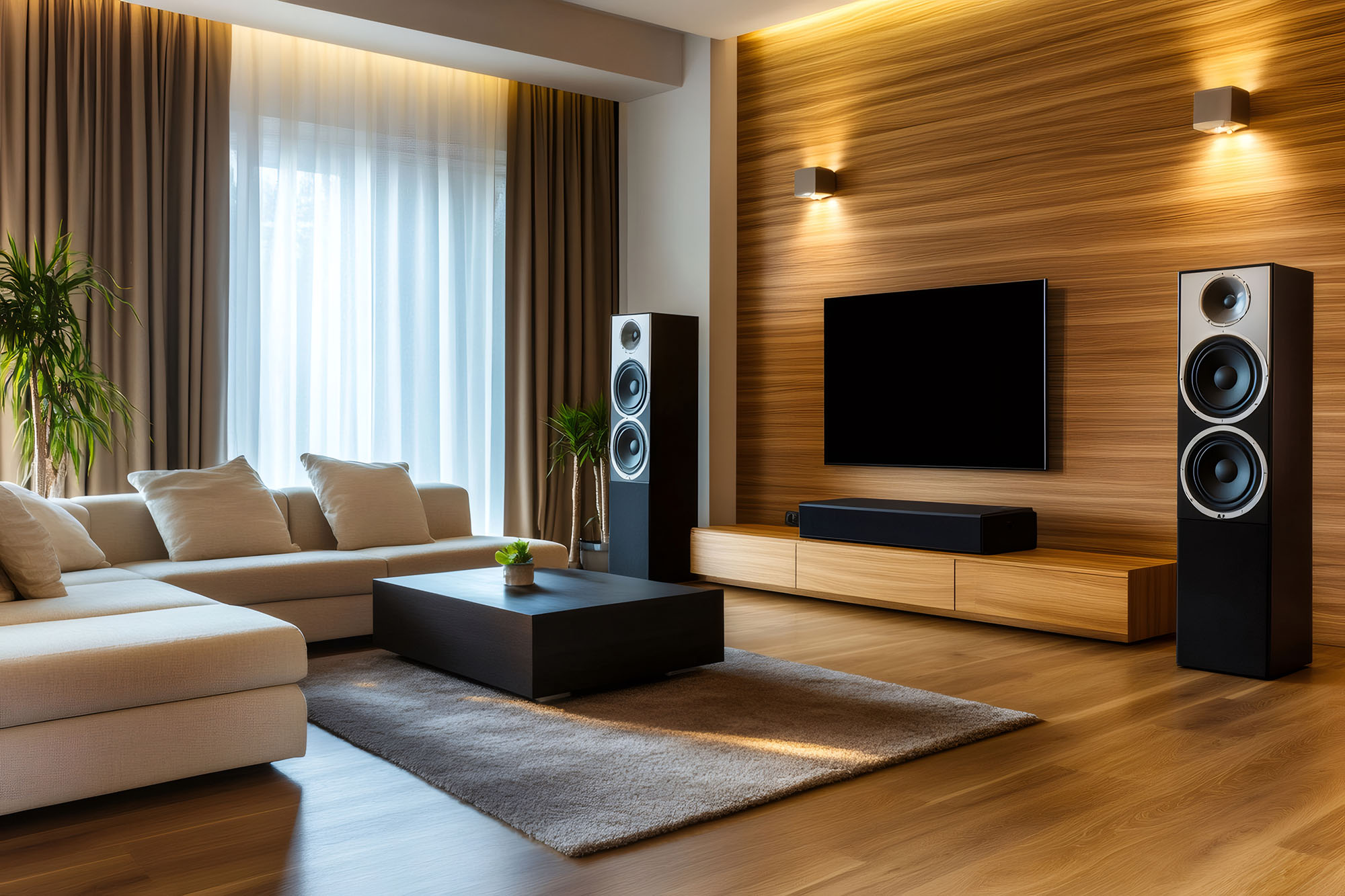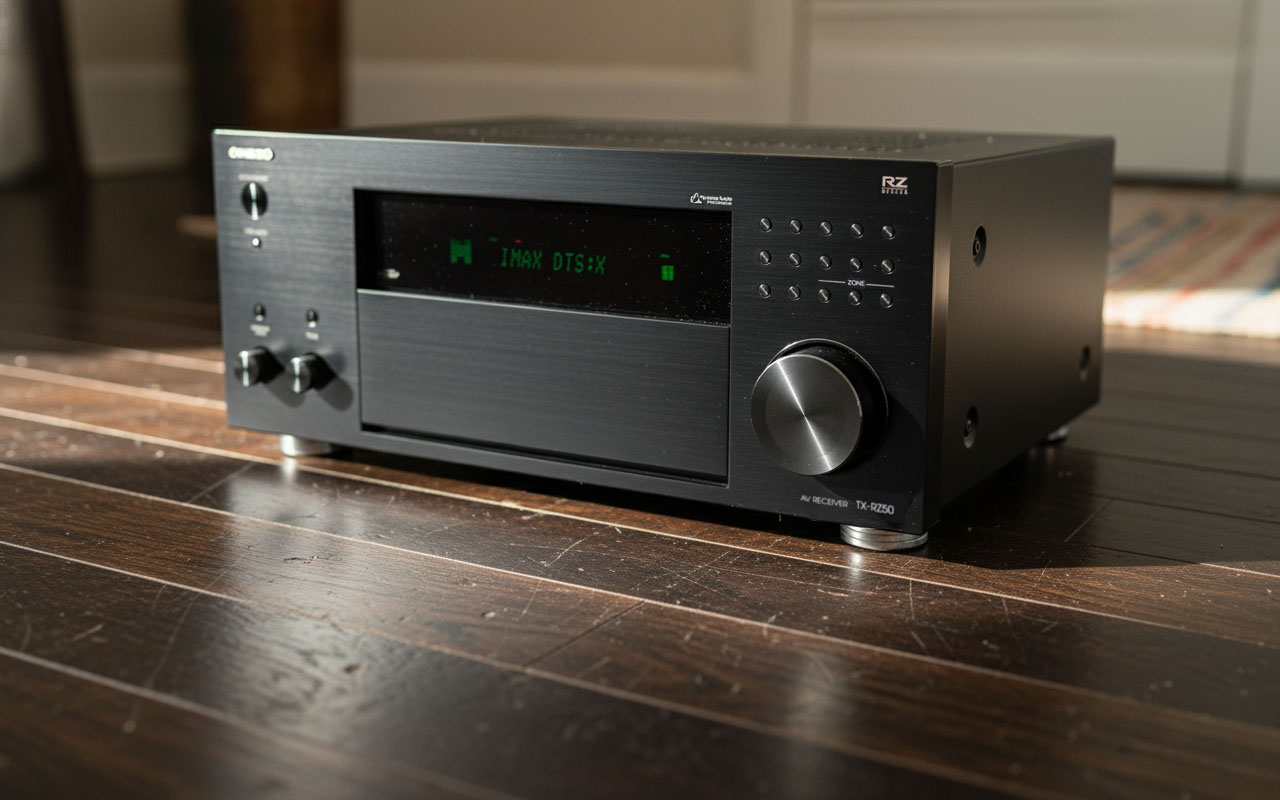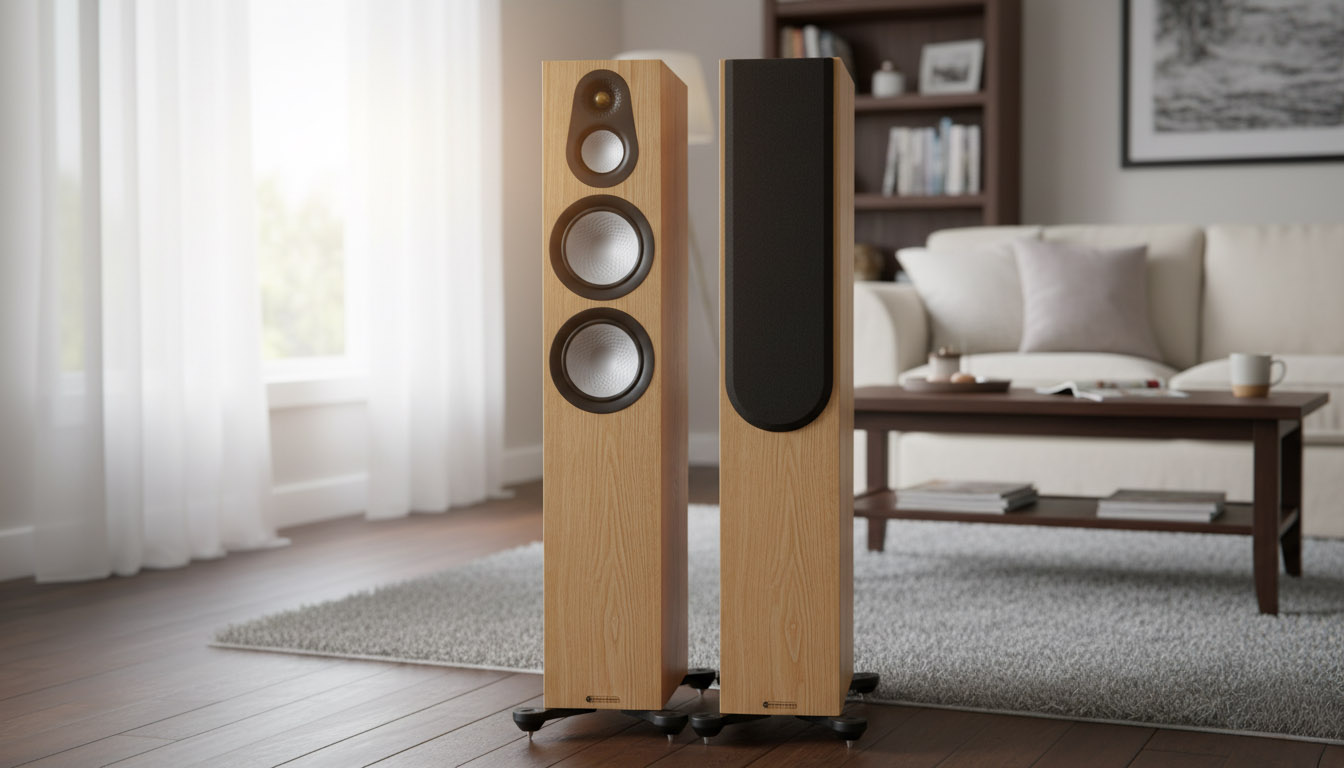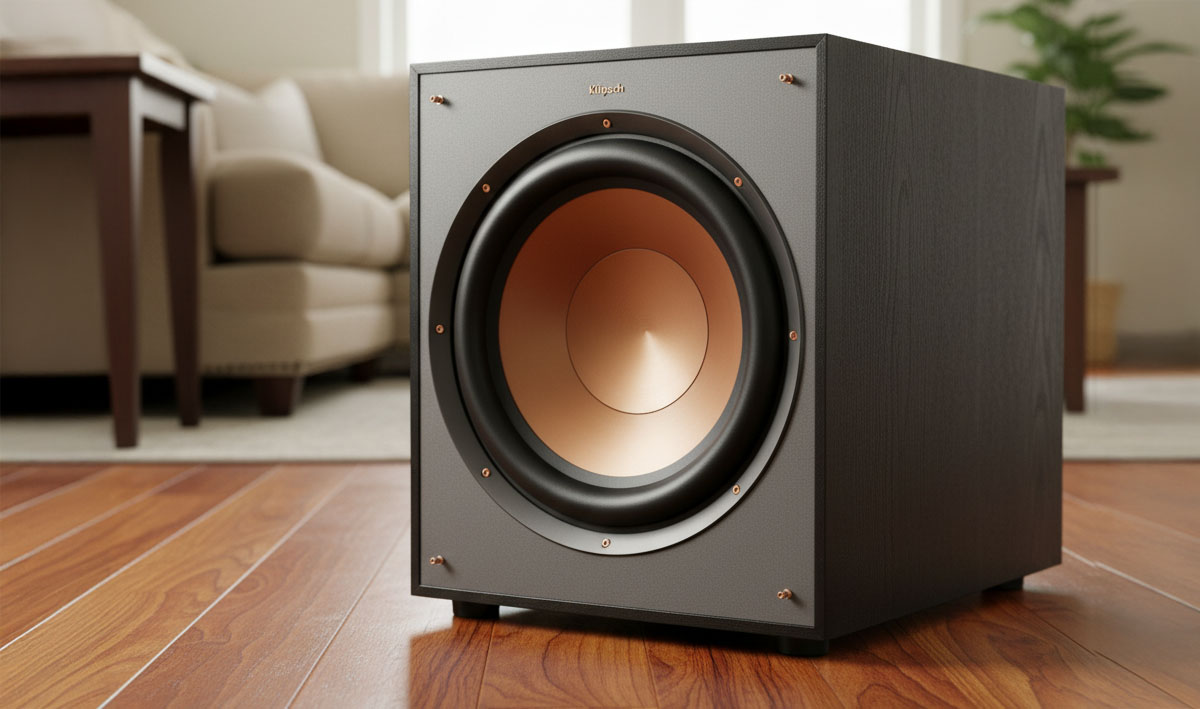Quick Take
The Sony SS-CS3M2 is a friendly, low-drama tower that makes dialogue easy to follow and music feel lively without demanding exotic amps or tricky placement. It opens up a room better than small bookshelves, and it scales nicely at typical living-room distances. Set them a foot or so from the wall, toe them in lightly, and cross to a compact sub around 80 Hz for best balance. They won’t bulldoze a huge open plan on their own, but in normal spaces they deliver clean, enjoyable sound with minimal fuss.
Pros
![]() Clear, forward dialogue that locks to the screen
Clear, forward dialogue that locks to the screen
![]() Even treble and stable imaging across a wide couch
Even treble and stable imaging across a wide couch
![]() Easy to drive with mainstream AVRs and integrated amps
Easy to drive with mainstream AVRs and integrated amps
![]() Straightforward placement and setup, forgiving of rooms
Straightforward placement and setup, forgiving of rooms
![]() Scales well at 8–10 feet listening distance with modest power
Scales well at 8–10 feet listening distance with modest power
Cons
![]() Can sound lean at 12+ feet without sub support
Can sound lean at 12+ feet without sub support
![]() Top end can feel a touch edgy if toed in too much in bright rooms
Top end can feel a touch edgy if toed in too much in bright rooms
![]() Grilles off add air but may push treble bite in reflective spaces
Grilles off add air but may push treble bite in reflective spaces
![]() Needs a sub for true cinema bass in larger or open rooms
Needs a sub for true cinema bass in larger or open rooms
Introduction
Sony’s CS series has long been about giving real living rooms a credible taste of hi-fi without the headaches. The Sony SS-CS3M2 towers continue that mission. They’re slim, cleanly finished, and easy to place, yet the three-way layout and wide-dispersion tweeter system help them throw a convincing stage for movies and music. If you’re stepping up from a soundbar or compact bookshelves and want a bigger, more grounded presentation, these towers make a strong case. The question is how far they can stretch in size and output before you need to add a sub or more power. We dig into that, because getting the match right is where the value shows up.
Key Features of the Sony SS-CS3M2 Speakers
Three-way driver array with super tweeter
A dedicated woofer, midrange, and tweeter, plus an ultra-high-frequency super tweeter, split the workload so each driver stays in its comfort zone. Practically, that means clearer dialogue and less smear when the mix gets busy. The super tweeter isn’t about hearing ultrasonic bats; it’s about keeping treble dispersion smooth so people off-center still hear crisp cymbals and ambience.
Slim tower cabinet with front stage scale
A narrow baffle minimizes diffraction and helps the speakers “disappear” visually and sonically. You get a bigger, taller image than most bookshelves can produce, which helps movies feel anchored to the screen and keeps a trio on the couch inside the same sonic bubble.
Room-friendly sensitivity and impedance
They’re designed to play happily with mainstream 5- to 7-channel receivers and integrated amps. Translation: you don’t need a brute of an amplifier to reach comfortable levels in a typical living room.
Grilles and finish
Magnetic grilles make it easy to tune the top end a hair and adjust the look. If your room is reflective, leaving the grilles on can gently soften the top octave. If your space is damped or you sit on-axis, grilles off add a touch of air.
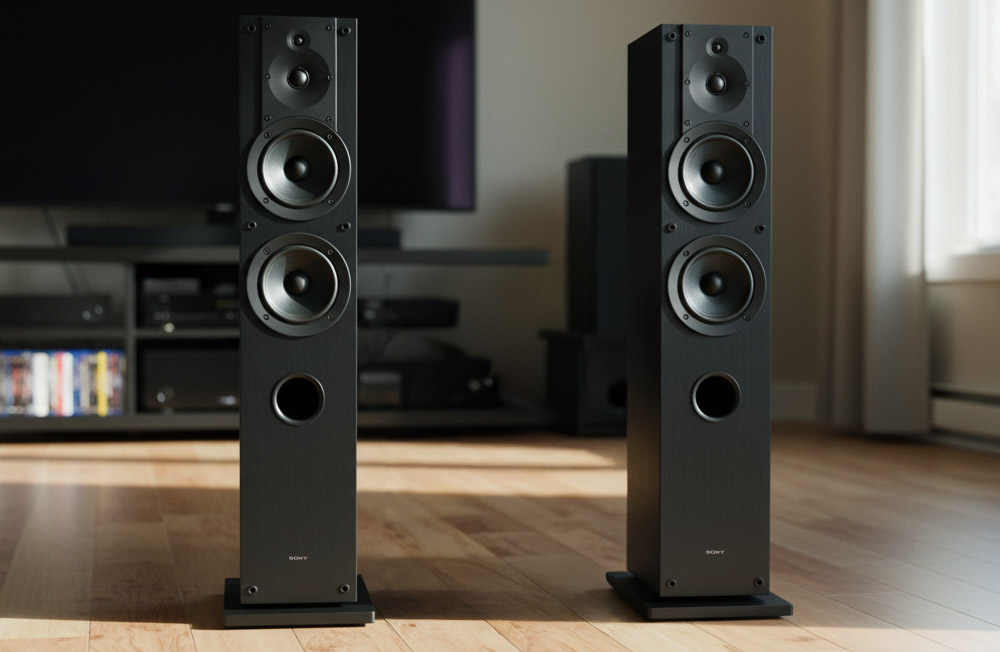
Sound Quality and Setup
Most owners highlight dialogue intelligibility first. Voices sit forward enough to follow at normal volume, which makes TV nights calmer and late-night viewing easier. Compared with smaller bookshelves, the SS-CS3M2 paints a wider front wall, so score and effects aren’t bunched up around the center channel. Pans move cleanly from left to right, and stereo music steps beyond the cabinets when you get toe-in right.
Bass is honest rather than hyped. At 8 to 10 feet, the towers keep mid-bass punch intact and carry vocals with body. Push seating past 12 feet in an open plan and they start giving up some weight. That’s the moment to bring in a compact sealed sub and cross around 80 Hz; the towers relax, dynamics feel less forced, and the stage gets larger without turning up the master volume.
Treble balance depends on room and placement. In bright spaces, too much toe-in can sharpen “s” sounds at higher levels. Back off toe-in until the speaker axes cross a foot or two behind the main seat. This keeps energy even for the side seats while taming bite for the person in the middle. If your room is very reflective, run grilles on and treat one first-reflection point with something soft. Owners who make those small moves report smoother highs and a more locked-in center image.
Practical placement recipe that beats guesswork
Start with the towers 16 inches from the back wall and 7 to 8 feet apart, tweeters near ear height. Play a familiar vocal track. Slide both speakers forward in 2-inch steps until lower mids lose thickness. Mark that spot. Add light toe-in and stop the moment the center image snaps into focus without spitty consonants. This routine lands most rooms faster than endless EQ tweaks.
Sub integration that sounds seamless
Set the towers to Small and start with an 80 Hz crossover. After auto-setup, lower the sub’s level 1–2 dB below what the AVR suggests. Move the subwoofer along the front wall in 6–8 inch steps while playing a sustained bass line, stopping where every note sounds equally loud. Only then nudge crossover up or down by 10 Hz if needed. Doing placement first prevents the “one-note” thump that gives subs a bad name.
How they scale with distance and power
With a mainstream AVR, the SS-CS3M2 cruises at everyday levels from 8–10 feet. If you routinely listen from 12–14 feet or love big orchestral swings, either add the sub and keep your AVR, or pair the towers with a clean integrated amp that offers a bit more current. If you constantly need 80–90 percent on the volume dial for comfort, fix speaker distance and crossover before blaming “not enough power.”
Who Is It For?
These towers fit listeners who want an easy, natural upgrade from a soundbar or compact bookshelves, value clear dialogue, and prefer a wide front stage over bulldozer bass. They suit small to medium rooms, or larger rooms when paired with a modest, well-placed sub. If your space is very live, they’re forgiving with grilles on and gentle toe-in. If you sit off-center, the wide treble dispersion keeps the couch sharing the same sonic picture.
Tips for Better Results
- Put the tweeters near seated ear height; use risers if your media console is low.
- Start 16 inches off the back wall, then refine using the 2-inch creep-forward method.
- Toe-in so the axes cross just behind the main seat; reduce toe-in if highs feel edgy.
- Run auto-setup, then verify distances to within 0.1 ft and set towers to Small at 80 Hz.
- Sub first, EQ second: find even-bass placement before touching crossover or levels.
- For late nights, use dynamic range control and small cuts to the sub trim for neighbor peace.
- On a three-seat sofa, aim for even off-axis treble by crossing axes behind the listener, not at them.
- If you add height channels, set their levels 1 dB lower than auto-setup when voices feel detached from the screen.
Alternatives and How the Sony Compares
Polk Signature Elite ES60
A triple-woofer design that delivers a bit more mid-bass density in bigger rooms. Tonally relaxed on top, it can play a touch warmer than the Sony. If your room is open-plan and you want extra body without a sub right away, the ES60 leans your way. If you’re sensitive to treble and prefer long, easy sessions, Polk’s voicing may suit you better.
RELATED: Polk Elite ES60 vs. ELAC Uni Fi 2.0 UF52
Klipsch RP-6000F II
Higher sensitivity and horn-loaded tweeter bring lively dynamics at modest power. Great for large rooms or listeners who crave snap and sparkle. In bright spaces, Klipsch can feel more forward up top; the Sony tends to be steadier as you move off-axis across a wide couch. If your seat is far and your AVR is modest, Klipsch has the efficiency edge.
ELAC Debut F6.2
Neutral, smooth treble with honest midrange tone. Not as sprightly as the Sony on top, but forgiving in harder rooms. For music-first listeners who favor a darker balance and don’t mind adding a sub for movies, the ELAC can be a satisfying alternative.
KEF Q750
Coaxial driver keeps imaging tight over a wide area, which is great for families. Needs more budget and a bit of breathing room, but if you value laser-etched imaging over outright punch, it’s a step up.
Bottom line on comparisons: the Sony SS-CS3M2 wins on ease, couch-wide consistency, and low-drama pairing with everyday AVRs. If you need big-room slam without a sub, look to larger or higher-sensitivity towers. If your room is bright, Sony’s dispersion and flexible toe-in make taming the top end straightforward.
Final Thoughts
The SS-CS3M2 towers are exactly what many living rooms need: clean speech, a wide stage, and setup that doesn’t turn into a weekend project. They won’t replace a sub in a cavernous space, and you should respect toe-in and room reflection control to keep the top end sweet. Do that, and they reward you with balanced everyday listening that scales nicely with a modest sub and a mainstream AVR. They’re not chasing shock value; they’re chasing the thing you notice on Tuesday nights when shows just sound right.
Frequently Asked Questions
Do I need a subwoofer with these?
Not to enjoy them, but a compact sealed sub crossed around 80 Hz adds weight and headroom, especially if you sit 12 feet or more from the speakers.
How far from the wall should I place them?
Start at about 16 inches and adjust forward in 2-inch steps until lower mids lose thickness. Mark the sweet spot.
How much toe-in is ideal?
Aim so the speaker axes cross a foot or two behind your main seat. Reduce toe-in if treble feels edgy at volume.
Grilles on or off?
In bright rooms, grilles on can gently soften the top octave. In damped rooms or nearfield listening, grilles off adds a hint of air.
Will my entry-level AVR drive them?
Yes. They’re easy to drive. If you’re constantly near the top of the volume range, revisit speaker distance, crossover, and sub setup before upgrading power.
Do they work for off-center seating?
Yes. The wide-dispersion tweeter system keeps treble more even for side seats when you toe-in correctly.
What if dialogue feels thin?
Bring the towers 2 inches closer to the wall or drop the crossover from 90 Hz to 80 Hz and recheck sub level.
What if bass feels boomy?
Move the towers a few inches forward, add a rug between speakers and seat, or reduce sub level 1–2 dB.
Teksignal.com participates in the Amazon Services LLC Associates Program, an affiliate advertising program designed to provide a means for sites to earn advertising fees by advertising and linking to Amazon.com. The reviews on this site are hands-off consensus reviews. We analyzed owner feedback across the internet and manufacturer documentation. We summarize sentiment; we do not republish individual user posts.

